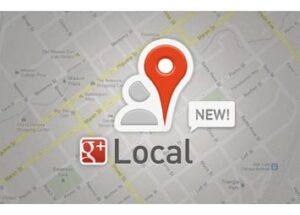 Aside from pure play e-tailers, some B2B companies, and brands that never do business in a physical location or have no local business to pursue, marketers should be embracing Google+ for the huge boost it can provide to any local marketing effort. In fact brands that meet two simple criteria should be empowering its locations to capitalize on a substantial but temporary opportunity to win local business with Google+ Local:
Aside from pure play e-tailers, some B2B companies, and brands that never do business in a physical location or have no local business to pursue, marketers should be embracing Google+ for the huge boost it can provide to any local marketing effort. In fact brands that meet two simple criteria should be empowering its locations to capitalize on a substantial but temporary opportunity to win local business with Google+ Local:
- The brand includes physical locations that can be frequented by customers
- Marketing goals include attaining scalable local marketing success
Unlike the early days of e-commerce, when pure plays challenged norms and often could beat more traditional retailers on price, having physical locations offers marketers a huge opportunity today as top search engines and social networks realign to favor and reward local. Today, brands that have physical locations and want to support those locations with successful local marketing campaigns have a tremendous early adopter opportunity to embrace Google+ Local Pages to transform their visibility on the Google search engine results page (SERP).
Benefits of Google+ Local Page Optimization
In a recent SIM Partners study, five primary optimization tactics were employed by 315 U.S. businesses in an effort to improve local SERP visibility on Google. Collectively, the businesses aimed to improve visibility for searches focused on 4,000 city/keyword combinations, and the results reinforce the importance and power of a Google+ Local Page optimization campaign in any local marketing initiative.
Prior to optimization, these businesses ranked in the top seven positions for only 26% of their keyword combinations. Only eight percent of combinations ranked in the top two positions.
Following enhancements to the businesses’ profiles, the businesses increased the instances in which they ranked in the top seven local positions by 179%, in the top two positions by 399%, and in the third through fifth positions by 97%. Combinations for which the businesses did not rank in any of the top seven positions decreased by 62%.
Six Questions to Ask Local Marketing and Search Marketing Teams
1. What role does Google+ Local Page optimization play in our local marketing initiatives?
First and foremost, CMOs should ask their teams how they’ve worked Google+ Local and efforts to optimize these local pages into the larger local marketing effort. Use and maintenance of these pages should be required at the location level and supported at the corporate level. Be ready to insist that this opportunity get some attention, especially if the team responds with blank faces or anything but an emphatic rundown of the many benefits being achieved through the Google+ Local effort. Then, assuming the team is leveraging Google+ Local page optimization, move onto the other five more tactical questions.
2. Have unique business descriptions been developed for each location?
If not, this should be a top priority. If so, ensure that the descriptions focus on keywords the target market would use while searching instead of an explanation of services, facilities, products, etc. that set the business apart from competitors. Google now allows locations to use an unlimited number of characters on its page. Still, remember to keep these descriptions short and sweet.
3. Does the team enable locations to use photos and videos on its page?
There are always fluctuations to the local algorithm, so teams should be sure to monitor performance. The number of photos a business adds may positively or negatively influence its rankings. Make sure primary photos for all Local pages are eye-catching. Encourage them to improve the odds of success by providing Google an additional link to where important information about the business is stored (identify a citation source Google has not). To do so, retrieve the URL from a photo on that site, and then load that URL into the appropriate Google Business listing.
4. Have we identified and removed duplicate listings?
Some locations may have had a pre-existing page. While locations that created their own pages should be applauded for taking the initiative, duplicate listings are undesirable for any business. They essentially pit that business against itself. Compounding the problem, one of the listings often contains incorrect information. Ultimately, a business’ rankings suffer when reviews, click history, third party citations, etc. are split between two listings; so have teams make sure each location is supported with only one Google+ Local Page.
5. Have the locations added directory listing information on sites that can improve Google rankings?
Google uses many off site ranking factors to determine local results. Not only does Google check to see if other sites are mentioning the business; it also looks to see if that website is reputable. So it is critical to identify the most influential third party sites and submit robust information.
6. Does each location have an ongoing optimization effort in place?
Each location should seek to modify its listing to rank for both long and short tail search terms on a continual basis. It is essential to keep tabs on Google business listings. The beginning of the optimization process requires the most maintenance. Once rankings begin to improve, upkeep will more than likely decrease, but businesses should track search volume trends that could affect their visibility positively or negatively.
Jon Schepke (jschepke@simpartners.com) is president and founder of SIM Partners. For a copy of their recent study on Google+ Local Optimization, click here.



